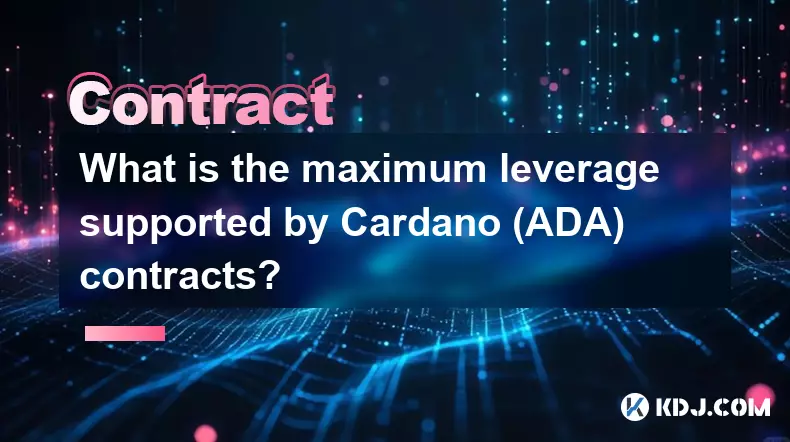-
 bitcoin
bitcoin $114779.865156 USD
2.30% -
 ethereum
ethereum $4226.519789 USD
2.39% -
 tether
tether $1.000545 USD
0.04% -
 xrp
xrp $2.890223 USD
0.92% -
 bnb
bnb $1030.029301 USD
2.95% -
 solana
solana $212.824944 USD
1.69% -
 usd-coin
usd-coin $0.999757 USD
0.01% -
 dogecoin
dogecoin $0.234961 USD
-0.27% -
 tron
tron $0.337174 USD
0.42% -
 cardano
cardano $0.804783 USD
0.09% -
 hyperliquid
hyperliquid $45.748770 USD
-2.85% -
 chainlink
chainlink $21.699170 USD
0.82% -
 ethena-usde
ethena-usde $1.001452 USD
0.08% -
 avalanche
avalanche $30.237800 USD
1.14% -
 stellar
stellar $0.372604 USD
1.52%
What Collateral Assets Does Binance Futures Support?
Binance Futures supports BTC, ETH, BNB, and major altcoins as collateral, with multi-asset margin, dynamic risk adjustments, and cross-collateral functionality for efficient trading.
Sep 18, 2025 at 01:36 pm

Supported Cryptocurrencies for Margin Trading
1. Binance Futures allows users to use a wide range of cryptocurrencies as collateral when opening positions. Bitcoin (BTC) is the most widely accepted asset and serves as a primary base for margin funding across multiple trading pairs.
2. Ethereum (ETH) is another major supported cryptocurrency, frequently used due to its high liquidity and market stability. Traders can deposit ETH directly into their futures wallets to secure both short and long positions.
3. Binance Coin (BNB), the native token of the Binance ecosystem, is accepted as collateral with added benefits such as reduced fees and enhanced borrowing capacity in certain scenarios.
4. Other top-tier digital assets like Cardano (ADA), Solana (SOL), Polkadot (DOT), and Ripple (XRP) are also integrated into the collateral system, enabling diversified risk management strategies.
5. Stablecoins including Tether (USDT), USD Coin (USDC), and Binance USD (BUSD) are fully supported, offering traders predictable valuation during volatile market swings.
Multi-Asset Collateral Framework
1. Binance operates a multi-asset collateral model that permits simultaneous usage of different tokens within a single account. This flexibility reduces dependency on any one cryptocurrency’s price movement.
2. The platform automatically calculates the net value of all eligible collateral assets based on real-time market prices, adjusting available margin accordingly.
3. Each asset is assigned a specific haircut rate depending on its volatility and liquidity profile. For instance, less stable altcoins may have higher haircuts, reducing their effective contribution to margin balance.
4. Users must maintain minimum thresholds for each collateral type; falling below these levels could trigger partial liquidation even if total equity appears sufficient.
5. The integration of cross-margin functionality ensures that losses from one position can be offset by gains or holdings in unrelated assets, enhancing capital efficiency.
Dynamic Risk Adjustment Mechanisms
1. Binance applies dynamic risk parameters that adjust the eligibility and weightings of collateral assets according to broader market conditions.
2. During periods of extreme volatility, certain low-cap or newly listed tokens might be temporarily excluded from collateral consideration to protect both users and the platform.
3. Regular audits and stress tests determine which assets remain qualified, ensuring alignment with current regulatory standards and financial soundness criteria.
4. Automatic rebalancing features help maintain adequate coverage ratios by converting underperforming collateral into more stable alternatives when predefined triggers are met.
5. Margin calls are issued proactively through push notifications and email alerts, giving traders time to deposit additional funds or reduce exposure before forced execution occurs.
Futures Wallet Management Features
1. Deposits made to the futures wallet are instantly reflected in the user's available balance, allowing immediate deployment toward new trades or existing position adjustments.
2. Internal transfers between spot and futures accounts occur seamlessly without network fees, promoting agile responses to changing opportunities.
3. Withdrawals require full settlement of open obligations; only surplus equity beyond required margins can be moved back to the spot wallet or external addresses.
4. Real-time tracking tools display the combined health score of all collateral assets, factoring in price trends, concentration risks, and implied volatility metrics.
5. Advanced users can set custom allocation rules using API integrations, automating how incoming deposits are distributed across different contract types and leverage tiers.
Common Questions About Binance Futures Collateral
Can I use NFTs as collateral on Binance Futures?No, NFTs are not currently accepted as collateral for futures trading on Binance. Only specified fungible cryptocurrencies listed in the official documentation qualify for margin usage.
Are there restrictions on using leveraged tokens as collateral?Leveraged tokens cannot be used as collateral because they represent synthetic exposures rather than direct ownership of underlying assets. Their complex structure makes them unsuitable for margin calculations.
What happens if a supported collateral asset gets delisted?If an asset is removed from the supported list, users are given a grace period to withdraw or convert it. Open positions backed by the asset will still be honored until closure, but no new margin can be posted using that token.
Is there a difference between isolated and cross-collateral margin usage?Yes, in isolated margin mode, only the designated collateral for a specific position is at risk. In cross-collateral mode, other assets in the account may be liquidated to cover losses if the primary margin is depleted.
Disclaimer:info@kdj.com
The information provided is not trading advice. kdj.com does not assume any responsibility for any investments made based on the information provided in this article. Cryptocurrencies are highly volatile and it is highly recommended that you invest with caution after thorough research!
If you believe that the content used on this website infringes your copyright, please contact us immediately (info@kdj.com) and we will delete it promptly.
- AI Training's Energy Crisis: Can Decentralization with Greg Osuri Offer a Solution?
- 2025-09-30 20:45:14
- Prenetics, Danny Yeung, and Token 2049: A Bold Bitcoin Strategy
- 2025-09-30 20:45:14
- ChatGPT, Bitcoin, and $HYPER: Riding the Crypto Wave
- 2025-09-30 16:25:14
- Mutuum Finance (MUTM): Riding the DeFi Wave with Crypto Price Prediction
- 2025-09-30 16:25:14
- XRP ETF Approval Odds Soar: Analyst Predicts $33 Price Surge!
- 2025-09-30 16:30:01
- Keel, Solana, and Sky Stablecoin: Fueling the Future of DeFi
- 2025-09-30 16:45:13
Related knowledge

What is the maximum leverage supported by Cardano (ADA) contracts?
Sep 30,2025 at 03:37am
Understanding Leverage in ADA Derivatives Trading1. Leverage in cryptocurrency futures and perpetual contracts allows traders to control larger positi...

How do I use the scheduled order feature in Cardano (ADA) contracts?
Sep 28,2025 at 10:18pm
Understanding Scheduled Orders in Cardano Smart ContractsCardano operates on a proof-of-stakes consensus mechanism and uses the Plutus scripting langu...

Can I modify the leverage of Cardano (ADA) contracts after opening a position?
Sep 30,2025 at 08:19am
Understanding Leverage in Cardano (ADA) Futures Trading1. Leverage allows traders to control larger positions using a smaller amount of capital. In th...

Where can I view the risk reserve for Cardano (ADA) contracts?
Sep 29,2025 at 09:19pm
Risk Reserve Overview in Cardano (ADA) Ecosystem1. The concept of a risk reserve within the Cardano blockchain does not align with traditional central...

How do I enable the "scalping-only" mode for Cardano (ADA) contracts?
Sep 24,2025 at 03:19am
Understanding Scalping Strategies in Crypto Derivatives1. Scalping in cryptocurrency trading refers to executing multiple short-term trades within min...

What is the settlement time for Cardano (ADA) contracts?
Sep 28,2025 at 04:18am
Understanding Cardano's Contract Settlement Mechanism1. Cardano operates on a proof-of-stake consensus model known as Ouroboros, which fundamentally i...

What is the maximum leverage supported by Cardano (ADA) contracts?
Sep 30,2025 at 03:37am
Understanding Leverage in ADA Derivatives Trading1. Leverage in cryptocurrency futures and perpetual contracts allows traders to control larger positi...

How do I use the scheduled order feature in Cardano (ADA) contracts?
Sep 28,2025 at 10:18pm
Understanding Scheduled Orders in Cardano Smart ContractsCardano operates on a proof-of-stakes consensus mechanism and uses the Plutus scripting langu...

Can I modify the leverage of Cardano (ADA) contracts after opening a position?
Sep 30,2025 at 08:19am
Understanding Leverage in Cardano (ADA) Futures Trading1. Leverage allows traders to control larger positions using a smaller amount of capital. In th...

Where can I view the risk reserve for Cardano (ADA) contracts?
Sep 29,2025 at 09:19pm
Risk Reserve Overview in Cardano (ADA) Ecosystem1. The concept of a risk reserve within the Cardano blockchain does not align with traditional central...

How do I enable the "scalping-only" mode for Cardano (ADA) contracts?
Sep 24,2025 at 03:19am
Understanding Scalping Strategies in Crypto Derivatives1. Scalping in cryptocurrency trading refers to executing multiple short-term trades within min...

What is the settlement time for Cardano (ADA) contracts?
Sep 28,2025 at 04:18am
Understanding Cardano's Contract Settlement Mechanism1. Cardano operates on a proof-of-stake consensus model known as Ouroboros, which fundamentally i...
See all articles










































































